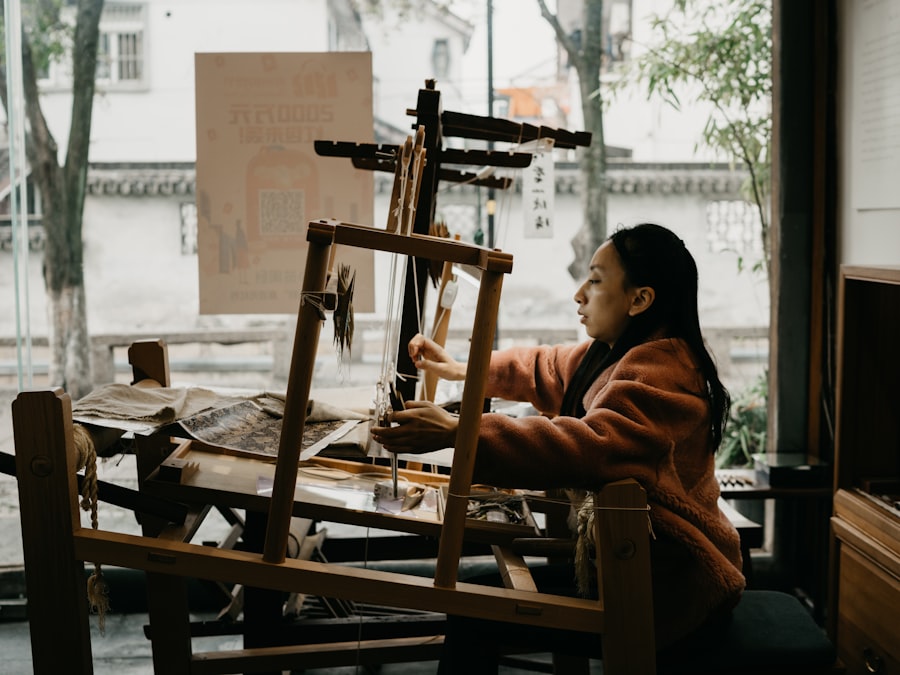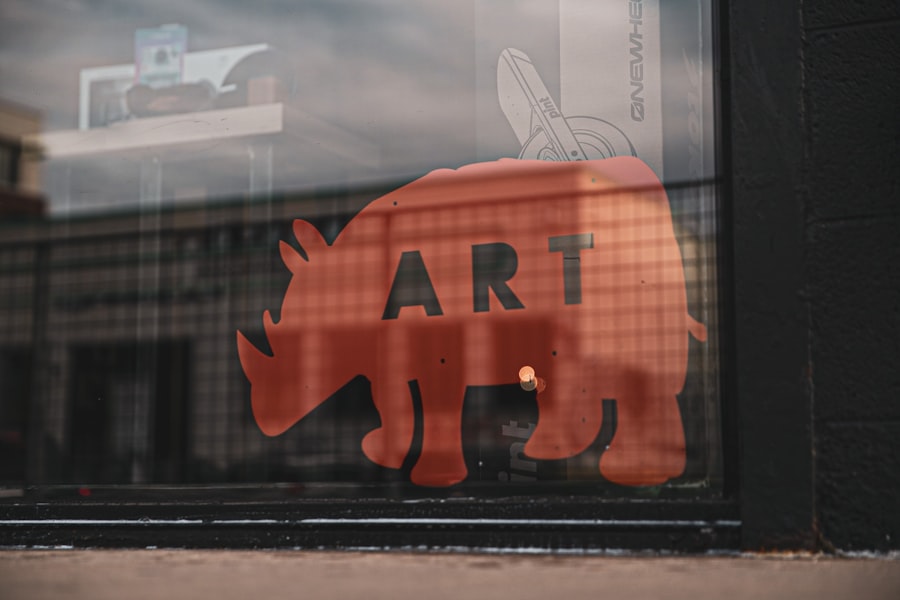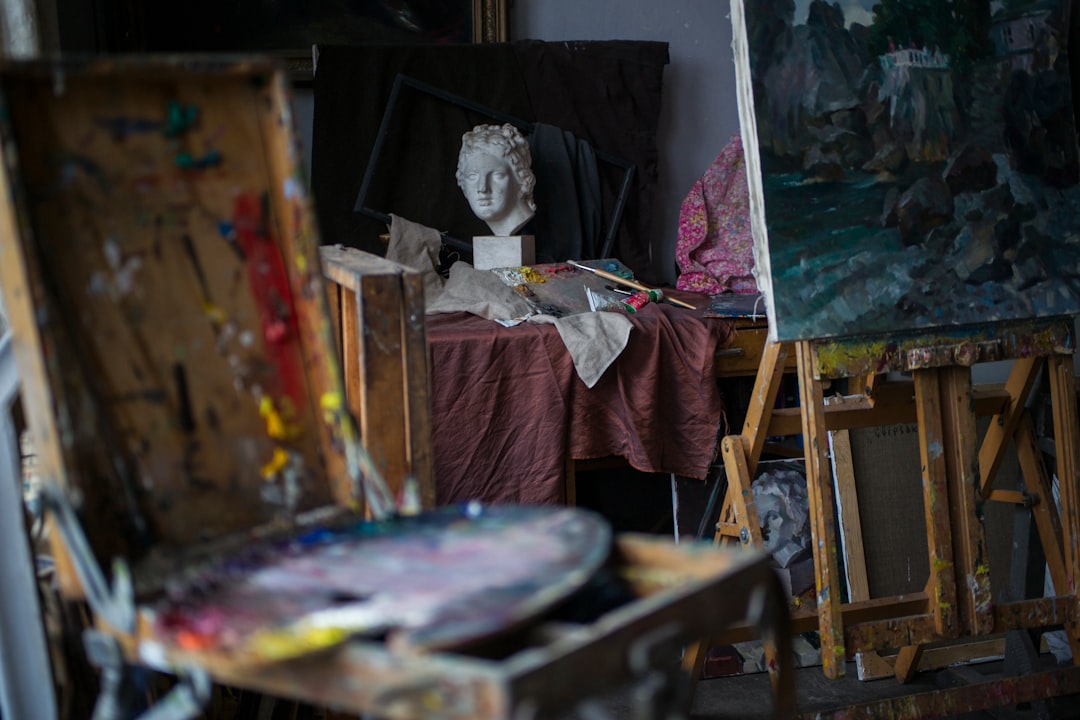As you delve into the world of artificial intelligence (AI), you may find yourself captivated by its transformative potential, particularly within the artistic industry. AI has emerged as a powerful tool that not only enhances creativity but also challenges traditional notions of artistry. The intersection of technology and art is reshaping how you perceive creativity, pushing boundaries and redefining what it means to be an artist in the 21st century.
With AI’s ability to analyze vast amounts of data and generate content, it has become a significant player in the creative landscape, prompting both excitement and concern among artists and art enthusiasts alike. The impact of AI on the artistic industry is profound, as it opens up new avenues for expression while simultaneously raising questions about authenticity and originality. As you explore this evolving relationship, you may find yourself pondering the implications of AI-generated art on your understanding of creativity.
Is art still art if it is created by a machine?
Key Takeaways
- AI is revolutionizing the artistic industry by offering new tools and techniques for creativity and expression.
- AI plays a significant role in creating art, from generating music and visual art to creating poetry and literature.
- AI has the ability to replicate various artistic styles, from classical to modern, and even create new styles altogether.
- The debate on the originality of AI-generated art raises questions about authorship, creativity, and the value of human input.
- AI is impacting traditional artistic practices by offering new ways to create, collaborate, and innovate.
The Role of AI in Creating Art
AI’s role in creating art is multifaceted, encompassing everything from generating images and music to writing poetry and crafting narratives. As you engage with various forms of AI-generated content, you may notice how these technologies can mimic human creativity while introducing unique elements that challenge conventional artistic norms. For instance, algorithms can analyze existing artworks, learning from patterns and styles to produce new pieces that reflect a blend of influences.
This capability allows AI to serve as both a collaborator and a tool for artists, expanding their creative horizons. Moreover, AI can assist in the creative process by providing inspiration and generating ideas that you might not have considered. By analyzing trends and styles across different mediums, AI can suggest innovative approaches that push the boundaries of your artistic practice.
This symbiotic relationship between human creativity and machine learning fosters an environment where experimentation thrives, enabling you to explore uncharted territories in your work. As you embrace these technological advancements, you may find that AI not only enhances your creative output but also encourages you to think differently about your artistic identity.
AI’s Ability to Replicate Artistic Styles

One of the most fascinating aspects of AI in the artistic realm is its ability to replicate and reinterpret various artistic styles. Through deep learning algorithms, AI can analyze thousands of artworks, identifying key characteristics that define specific movements or individual artists. As you observe this process, you may be struck by how AI can produce pieces that closely resemble the works of renowned painters or sculptors, effectively bridging the gap between historical art forms and contemporary practices.
However, this ability to replicate styles raises important questions about authenticity and originality. While AI can generate works that mimic the techniques of famous artists, it lacks the emotional depth and personal experiences that inform human creativity. As you reflect on this distinction, you may find yourself grappling with the implications of AI’s stylistic replication on your own artistic journey.
Does the ability to imitate great masters diminish the value of human-created art? Or does it offer a new lens through which to appreciate the nuances of creativity? These questions invite you to consider the evolving nature of artistry in an age where machines can emulate human expression.
The Debate on the Originality of AI-Generated Art
| Metrics | AI-Generated Art |
|---|---|
| Originality | Debated among art critics and scholars |
| Creativity | Questioned in terms of true artistic expression |
| Market Value | Varies based on perception of authenticity |
| Legal Rights | Challenged in terms of copyright and ownership |
The debate surrounding the originality of AI-generated art is a complex and contentious issue that invites you to examine your own beliefs about creativity. On one hand, proponents argue that AI-generated works are legitimate forms of art, as they represent a new frontier in creative expression. They contend that originality can be redefined in light of technological advancements, suggesting that collaboration between humans and machines can yield innovative results that challenge traditional definitions of authorship.
Conversely, critics assert that true originality stems from human experience and emotion, qualities that AI cannot replicate. As you engage with this debate, you may find yourself considering what it means for something to be “original.” Is it enough for a piece to be unique in its composition, or must it also convey a sense of personal narrative? This discourse encourages you to reflect on your own artistic values and how they align with or diverge from the emerging landscape shaped by AI.
The Impact of AI on Traditional Artistic Practices
As AI continues to permeate the artistic industry, its impact on traditional practices cannot be overlooked. You may notice that many artists are beginning to incorporate AI tools into their workflows, blending time-honored techniques with cutting-edge technology. This fusion allows for a richer exploration of creativity, as artists experiment with new methods while still honoring their roots.
For instance, painters might use AI-generated sketches as a foundation for their work, infusing their personal touch into pieces that begin with machine-generated concepts. However, this integration also raises concerns about the potential erosion of traditional skills and techniques. As you witness the rise of AI in art creation, you might wonder whether future generations will prioritize technological proficiency over mastering classical methods.
This tension between innovation and tradition invites you to consider how you can balance embracing new tools while preserving the essence of your artistic heritage. Ultimately, navigating this landscape requires a thoughtful approach that honors both the past and the future of artistic expression.
The Rise of AI-Enhanced Creativity

The rise of AI-enhanced creativity presents an exciting opportunity for artists like yourself to expand your creative toolkit. With access to advanced algorithms and machine learning capabilities, you can explore new dimensions of your work that were previously unimaginable. For example, AI can assist in generating color palettes, suggesting compositions, or even creating entire pieces based on your input.
This collaborative process allows you to push beyond your comfort zone and experiment with ideas that challenge your artistic instincts. Moreover, AI-enhanced creativity fosters a sense of community among artists who are eager to share their experiences with these technologies. As you connect with fellow creatives who are also exploring AI’s potential, you may find inspiration in their approaches and insights.
This exchange of ideas can lead to innovative collaborations that blend diverse perspectives and techniques, ultimately enriching your artistic practice. Embracing AI as a partner in creativity encourages you to view technology not as a threat but as an ally in your quest for self-expression.
The Potential Threat of AI to Artists’ Job Security
While the integration of AI into the artistic industry offers numerous benefits, it also raises concerns about job security for artists like yourself. As machines become increasingly capable of generating high-quality art, there is a fear that traditional roles may become obsolete. You might find yourself questioning whether there will still be a place for human artists in a world where algorithms can produce compelling works at an unprecedented scale.
This anxiety is compounded by the rapid pace at which technology evolves, leaving many artists feeling uncertain about their future prospects. However, it’s essential to recognize that while AI can replicate certain aspects of creativity, it cannot replace the unique perspectives and emotional depth that human artists bring to their work. As you navigate this landscape, consider how you can leverage your distinct voice and experiences to carve out a niche that sets you apart from machine-generated content.
Emphasizing your individuality may be key to thriving in an era where technology plays an increasingly prominent role in art.
The Ethical and Legal Implications of AI-Generated Art
The rise of AI-generated art also brings forth a myriad of ethical and legal implications that warrant careful consideration. As an artist, you may find yourself grappling with questions surrounding copyright ownership and intellectual property rights related to machine-generated works. If an algorithm creates a piece based on existing styles or images, who holds the rights to that creation?
These questions challenge traditional notions of authorship and ownership within the artistic community. Additionally, ethical concerns arise regarding the potential misuse of AI-generated art for deceptive purposes or misinformation. As you engage with these issues, it becomes crucial to advocate for clear guidelines and regulations that protect both artists and consumers alike.
By participating in discussions surrounding these topics, you can contribute to shaping a framework that ensures ethical practices within the evolving landscape of AI-generated art.
The Importance of Human Creativity in Art
Despite the advancements made by AI in generating art, the importance of human creativity remains paramount. Your unique experiences, emotions, and perspectives infuse your work with depth and meaning that machines cannot replicate. As you reflect on your artistic journey, consider how your individuality shapes your creations and resonates with audiences on a personal level.
Moreover, embracing your humanity as an artist allows you to connect with others on a deeper level. Audiences often seek out art not just for its aesthetic appeal but for the stories and emotions behind it.
By prioritizing your own creative voice amidst technological advancements, you can cultivate meaningful connections with those who engage with your work. This emphasis on human creativity serves as a reminder that even in an age dominated by machines, the heart of artistry lies within each individual artist.
Collaborative Opportunities between Artists and AI
As you navigate the evolving landscape shaped by AI, consider the collaborative opportunities that arise from this partnership between humans and machines. By embracing technology as a co-creator rather than a competitor, you can unlock new dimensions of creativity that enhance your artistic practice. For instance, collaborating with AI can lead to innovative projects that blend traditional techniques with cutting-edge technology, resulting in unique outcomes that challenge conventional boundaries.
These collaborations also foster an environment where experimentation thrives. You might find yourself inspired by unexpected results generated by AI algorithms, prompting new ideas and directions for your work. By viewing AI as a collaborator rather than a threat, you open yourself up to endless possibilities for growth and exploration within your artistic journey.
The Future of AI and the Artistic Industry
Looking ahead, the future of AI in the artistic industry holds immense potential for innovation and transformation. As technology continues to evolve at an unprecedented pace, artists like yourself will have access to increasingly sophisticated tools that enhance creativity while challenging traditional norms. This dynamic landscape invites you to embrace change and adapt your practices accordingly.
Moreover, as discussions surrounding ethics and originality continue to unfold, there will be opportunities for artists to shape the narrative around AI-generated art. By actively participating in these conversations and advocating for responsible practices within the industry, you can contribute to defining what it means to be an artist in an age where technology plays an integral role in creative expression. In conclusion, as you navigate this exciting yet complex terrain shaped by artificial intelligence, remember that your unique voice as an artist remains invaluable amidst technological advancements.
Embrace collaboration with AI as a means to enhance your creativity while staying true to your individuality. The future holds endless possibilities for those willing to explore new frontiers while honoring the rich tapestry of human artistry.
The debate over whether AI is taking jobs away from artists is a complex and multifaceted issue. While some argue that AI tools can enhance creativity and productivity, others fear that they may replace human artists altogether. A related article on this topic can be found on the How Wealth Grows website, which explores the broader implications of AI on various industries. For more insights, you can read the article by visiting How Wealth Grows. This resource delves into the economic and social impacts of AI, providing a comprehensive overview of how technology is reshaping the workforce.
FAQs
What is AI?
AI stands for artificial intelligence, which refers to the simulation of human intelligence in machines that are programmed to think and learn like humans.
How is AI impacting the job market for artists?
AI is impacting the job market for artists by automating certain tasks such as graphic design, music composition, and even some forms of visual art. This has led to concerns about job displacement for artists.
Are AI technologies capable of creating art on their own?
Yes, AI technologies such as deep learning algorithms and generative adversarial networks are capable of creating art on their own. They can produce music, visual art, and even literature.
What are some examples of AI taking over artistic jobs?
Examples of AI taking over artistic jobs include AI-generated music compositions, AI-generated visual art, and AI-powered graphic design tools that can create designs without human intervention.
What are the potential implications of AI taking over artistic jobs?
The potential implications of AI taking over artistic jobs include job displacement for artists, changes in the nature of artistic work, and the need for artists to adapt to new technologies and ways of working.
How are artists responding to the rise of AI in the creative industry?
Some artists are embracing AI as a tool for their creative process, while others are expressing concerns about job displacement and the impact of AI on the artistic community. There is also a growing interest in exploring the intersection of AI and art.
